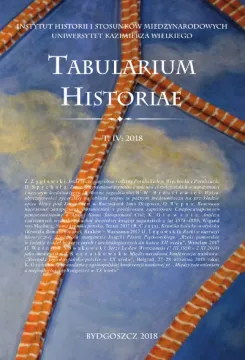The Influence of Knights’ Customs on the Image of War in the Late Middle Ages on the Example of the Description of the Battle of Koronowo in the Annales of Jan Długosz
DOI:
https://doi.org/10.34767/TH.2018.04.03Keywords:
Koronowo, Jan Długosz, knights’ customsAbstract
The view of the battle which was perceived in late medieval chronicles was not true as far as war reality is concerned. The rules of honourable fight in the open field which was a face to face struggle between two armies were hardly ever executed. The real wars were much bloodier and crueler and idealistic knightly values were subjected to pragmatism and willingness to get as many loots as it was possible. The chroniclers focused on the course of clashes of heavy-armed horse riders, which were duels deciding about the result of the battle. The classic example was chronicler’s description of the battle in the late medieval time in Jan Długosz Annales about the fight in Koronowo between the Polish King arms and Teutonic Knights on October 10, 1410. The Polish chronicler applauds both sides of conflict. Their confrontation in the decisive part of the battle was turned into duels. Some researchers have an opinion that it was a unique trace in the Polish source materials as far as the tournament rules in the battles are concerned. The author of the article attempts to verify the accounts of the Polish chronicler on the basis of the existing references and confronts them with the late medieval war reality.

